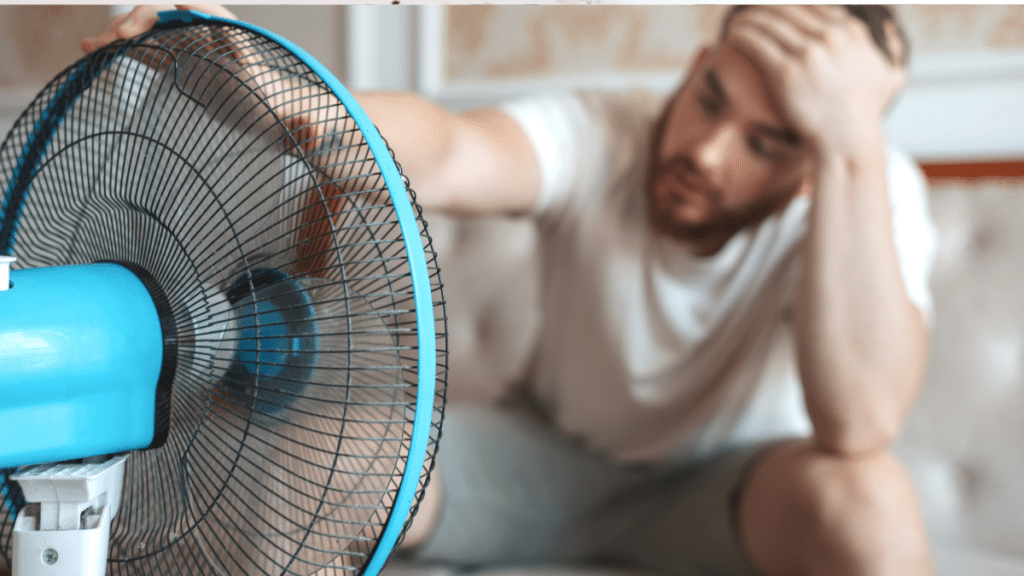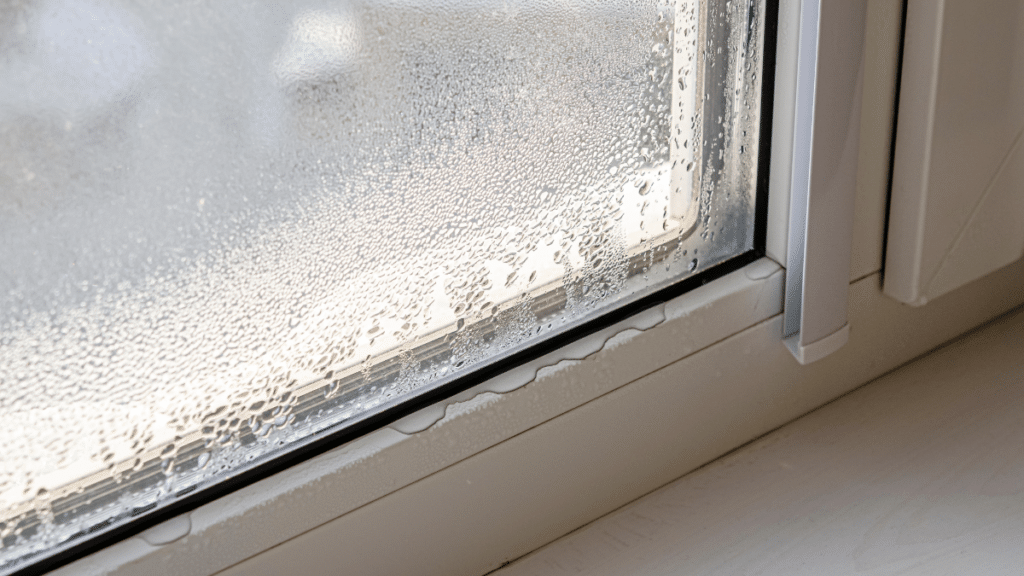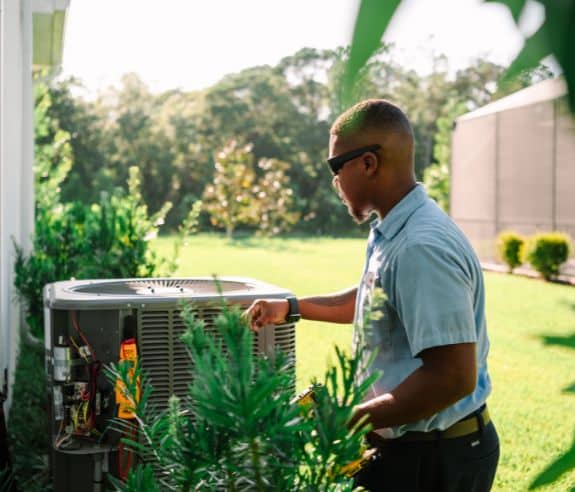Living in Florida means dealing with high humidity levels year-round, and for many homeowners in Tampa, excess moisture inside the house can lead to mold growth, musty odors, and higher energy bills.
At Millian Aire, we help Tampa homeowners achieve the ideal indoor humidity level by offering whole-house dehumidifiers that integrate seamlessly with your HVAC system. Proper humidity control isn’t just about comfort—it also plays a major role in indoor air quality and HVAC efficiency. If your home feels damp or sticky, or if you’ve noticed condensation on windows and walls, it’s time to explore whether a home dehumidifier could solve the problem.

Causes of High Indoor Humidity in Tampa Homes
Florida’s warm, humid climate means that moisture is constantly present in the air, and without proper ventilation or dehumidification, it can easily build up inside your home. Several factors contribute to high indoor humidity levels:
- Florida’s Climate – Warm air holds more moisture, and Tampa’s subtropical weather means high humidity levels year-round, especially during the summer months.
- Poor Ventilation – Homes that lack adequate airflow can trap excess moisture inside, creating the perfect conditions for mold and mildew.
- Oversized AC Units – If your air conditioner cools your home too quickly, it won’t run long enough to remove humidity effectively, leaving the air feeling damp.
- Leaky Ductwork – Gaps or leaks in your HVAC ductwork can pull in humid air from attics or crawl spaces, increasing indoor moisture levels.
- Everyday Activities – Cooking, showering, and even breathing release moisture into the air. Without proper dehumidification, this moisture can accumulate and cause indoor humidity problems.
Signs Your Home is Too Humid

Since Florida’s climate already has high outdoor humidity, it’s essential to recognize when excess moisture is affecting your indoor air quality. Here are some common warning signs that your home could benefit from a whole-house dehumidifier:
- Mold & Mildew Growth – If you notice mold in bathrooms, closets, or on walls, excess humidity is likely the cause. A dehumidifier for mold prevention helps keep moisture levels under control.
- Condensation on Windows & Walls – Water droplets forming on windows, walls, or even pipes indicate high humidity levels, which can lead to rot and structural damage.
- Musty Odors & Poor Air Quality – A persistent damp smell in your home is often a sign of trapped moisture, which can allow mold and bacteria to thrive.
- Sticky, Uncomfortable Air – If your home feels damp and stuffy, even when the AC is running, your HVAC system may be struggling to remove excess humidity.
A whole-house dehumidifier is the most effective way to combat these issues, as it works with your HVAC system to remove excess moisture from the air before it circulates through your home. Unlike portable dehumidifiers, which only address moisture in a single room, a whole-home solution ensures balanced humidity levels throughout your entire house.
Why Balanced Humidity Matters
Indoor humidity isn’t just about personal comfort—it affects everything from your home’s structure to your HVAC system’s performance. Experts recommend keeping your humidity level between 30-50% to maintain a healthy indoor environment.
- Too much humidity (above 50%) encourages the growth of mold, mildew, and dust mites, which can trigger allergies and respiratory issues. It also makes your home feel sticky and uncomfortable, even when the AC is running.
- Too little humidity (below 30%) can cause dry skin, static electricity, and irritation in your nose and throat. This is rarely an issue in Florida’s naturally humid climate, but can occur when you’re running the heater a lot on cold days.
While most Tampa homes struggle with excess humidity, there are rare cases where indoor air can become too dry—typically during cooler months or in homes with excessive air conditioning use.
If you experience dry, itchy skin and eyes, nosebleeds, or static electricity buildup, your indoor air may lack moisture. Low humidity can also cause wood floors, furniture, and paint to dry out.
Small adjustments to HVAC settings can help without requiring a dedicated humidifier.
Setting your thermostat to a moderate temperature (around 68-72°F) prevents the air from becoming too dry. Keeping your HVAC fan on “Auto” instead of “On” allows proper cycling without over-drying.
If you use a dehumidifier, ensure it’s not removing too much moisture, and be mindful of overusing exhaust fans in bathrooms and kitchens, as they can strip humidity from the air.
Sealing air leaks in windows, doors, and ductwork also helps prevent dry outdoor air from entering your home, keeping humidity levels more stable.
But for most Tampa homeowners, excess humidity remains the bigger concern. While occasional dryness can be managed with small HVAC adjustments, consistently high moisture levels require a more proactive solution.
A whole-home dehumidifier works with your HVAC system to remove excess humidity before it becomes a problem, improving comfort, air quality, and energy efficiency.
If your home feels damp, sticky, or prone to mold growth, investing in a dehumidifier is the best way to maintain a healthier indoor environment.

Choosing the Right Dehumidifier for Your Home
If your home has persistent humidity issues, a whole-house dehumidifier is often the best solution. Unlike portable units that only address moisture in a single room, a whole-home dehumidifier integrates with your HVAC system to regulate humidity across your entire living space.
Here’s how different dehumidifiers compare:
- Whole-House Dehumidifiers – Installed within your HVAC system, these units pull excess moisture from the air before it circulates, keeping humidity levels balanced throughout the home.
- Portable Dehumidifiers – Best for single rooms or targeted moisture control. These units need to be manually emptied and only cover small areas like basements or bedrooms.
- Dehumidifiers for Mold Prevention – If your home has visible mold growth, choosing a high-capacity dehumidifier designed to remove moisture efficiently is essential for long-term mold control.
For Tampa homeowners, investing in a whole-home dehumidifier offers better long-term benefits compared to running multiple portable units.
At Millian Aire, we specialize in whole-home dehumidifier solutions that integrate seamlessly with your HVAC system, providing reliable moisture control throughout your home.
How Dehumidifiers Improve Energy Efficiency
Beyond improving comfort and reducing mold risk, a dehumidifier can also help lower your energy bills.
Here’s how:
- Less Strain on Your AC – When humidity levels are high, your air conditioner has to work harder and longer to cool your home, increasing energy costs. A dehumidifier lightens the load, allowing your AC to run more efficiently.
- Faster Cooling Times – Dry air cools more quickly than humid air, which means your home reaches a comfortable temperature faster.
- Lower Overall Energy Usage – By reducing excess moisture, a dehumidifier allows you to set your thermostat a few degrees higher without sacrificing comfort, leading to energy savings.
For Tampa’s hot and humid summers, pairing a high-efficiency HVAC system with a dehumidifier can make a big difference in home comfort and utility costs.

Millian Aire’s Expertise in Dehumidifier Installation
At Millian Aire, we specialize in helping Tampa homeowners tackle high indoor humidity with effective, energy-efficient dehumidifier solutions. Whether you’re struggling with mold, musty odors, or an overworked AC system, our experts can recommend the best whole-house dehumidifier for your needs.
Schedule a Free Consultation – Our team can assess your home’s humidity levels and recommend the right dehumidifier solution.



